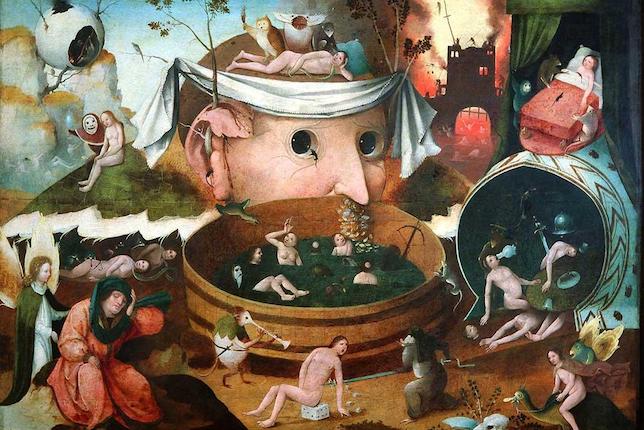Artists from many different movements and styles have created terrifying works for centuries. Each historical era’s art displays how the idea of the terrifying has changed and evolved along with societal and cultural changes throughout history.
While religious and Hell-related phobias predominated in society during the Middle Ages and the Reformation, these progressively gave way to a wide range of other phobias, from sociological to psychological in nature. Here, we look at some ways that artists throughout history have portrayed dread, from spooky paintings to eerie sculpture!
The 1800s: Romanticism and the human condition
By the 1800s, a lot had changed in Europe. The Enlightenment intellectual and philosophical movement of the 16th and 17th centuries had presented the Church with yet another threat. By putting human reason ahead of religious revelation, it opposed not just specific beliefs but the entire religion.
At the beginning of the nineteenth century, two aesthetic revolutions dominated European art. On the one hand, the Neoclassical movement, which was motivated by ancient art and Enlightenment ideologies, emphasized reason and the perfection of the human form. On the other side, romantic artists disapproved of this idealized aesthetic. The subjective aspects of human experience, such as feelings, emotion, and imagination, were instead what they aimed to depict.
Religious fear in the Renaissance

Hieronymus Bosch, a Dutch artist of the Northern Renaissance, has confounded historians for decades. It’s possible that his art will never fully convey its intended message. However, it can be said with certainty that the terrifying images shown in his paintings are a reflection of the prevailing religious phobias of the time. In Europe, the 16th century saw extensive religious reform and protest, which led to the division of the Church into Protestantism and Catholicism. Bosch was greatly concerned about the end of the world and humanity’s eternal retribution for its misdeeds, as were many people in this era.
One of the scariest paintings in Bosch’s body of work is this one. The tale Les Visions du chevalier Tondal (The Visions of Tondal), in which a young knight is taken by a guardian angel through Heaven, Hell, and purgatory, served as its inspiration. He makes a promise to live a good life when he returns to earth after seeing the horrors of Hell and purgatory. The lower left corner of the artwork features a representation of Tondal and the guardian angel.
Bosch’s artistic conceptions served as the foundation for all subsequent depictions of hell. Tondal’s Vision displays a disorganized mash-up of naked individuals, odd objects, and animals in his signature manner. Souls are punished in various ways across the fantasy world for the misdeeds they did on Earth. A sleeping Tondal is shown these punishments by a guardian angel in what seems to be a dream. These punishments are similar to elements of the artist’s iconic triptych The Garden of Earthly Delights.
The scary paintings of Francisco Goya

Saturn Devouring His Son by Francisco Goya is one illustration of this aesthetic transition. In this piece, Saturn, the Roman mythology’s Zeus’s father, is shown devouring his child. Saturn is said to have eaten each of his children out of concern that one would overthrow him, according to myth.
One of Goya’s Black Paintings, which he created between 1819 and 1823, is this piece. The artist had already gone through his fair share of suffering by this point. He had personally experienced the horrors of the Napoleonic Wars and had gotten through two nearly deadly diseases. He developed a sour attitude toward people as a result, and he experienced mental anguish. In 1819, he relocated to the “Deaf Man’s Villa,” a home outside of Madrid, where he created his Black Paintings. These pieces were never meant to be displayed publicly or to leave his home. He painted them directly into the interior walls of his home while working in solitude.
It is believed that Goya’s Black Paintings came forth as a result of his physical and mental decline at this time. In particular, they reveal his apprehension of disease and madness as well as his negative outlook on people. These paintings are among his scariest due to their dark hues, themes, and subjects.











